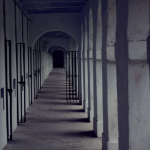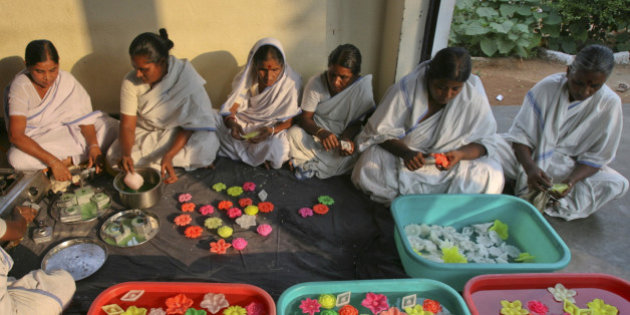This article deals with the legal rights of the incarcerated female prisoners and offers suggestions to improve the overall conditions of female prisoners inside Indian prisons.
Rights of the Incarcerated Women
In A. K. Roy v. Union of India and Others, the Court stated that:
A prisoner on his/her being imprisoned does not lose all his rights. He / She loses only a part of his rights that are the necessary consequences of his confinement and the rest of the rights are preserved. Basic commitment of our Constitution is to foster human dignity and the well-being of our people. The convicts are to be treated in a manner consistent with human dignity.
In Sunil Batra v. Delhi Administration, the Supreme Court has laid down three principles,
- A person in prison doesn’t become non-person.
- A person in prison is entitled to all Human Rights within the limitation of imprisonment.
- There is no justification for aggravating the suffering already inherent in the process of incarceration.
These three principles ensure that despite the incarceration the prisoners are entitled to basic human rights that are very much part of their existence. A number of legal provisions which are applicable to both penal and non-penal custody of women.
Universal Declaration of Human Rights
India ratified Universal Declaration of Human Rights and enacted Protection of Human Rights Act, 1993 under which a body was constituted, National Human Rights Commission, for the promotion and protection of Human Rights. The convention is a milestone document in the history of human rights.
International Convention on the Elimination of all Forms of Discrimination against Women
It is also known as CEDW. India ratified the convention on 9th July 1993. In Article 12(2) of the Convention, the party state ensures to women appropriate services in connection with pregnancy, confinement and the post-natal period, granting free services where necessary, as well as adequate nutrition during pregnancy and lactation.
United Nations International Covenant on Civil and Political Rights
This convention is monitored by the United Nations Human Rights Committee. It basically reviews the party States status in implementing the Human Rights Laws. India ratified the convention and is bound by its provisions. Article 10(1) of the Convention ensures all person deprived of liberty shall be treated with humanity. The inhuman treatment and custodial torture of the incarcerated women’s lead to the violation of this International Convention.
The Convention against Torture and Other Cruel, Inhuman or Degrading Treatment or Punishment, 1984.
This Convention has become part of customary International Law. It has made all the States obligated to abide by the Convention.
United Nations Standard Minimum Rules for the Treatment of Prisoners 1955
This is standard Minimum Rules for the Treatment of Prisoners. The rules were adopted by the First United Nations Congress on the Prevention of Crime and the Treatment of Offenders, held at Geneva in 1955. It was later approved by the Economic and Social Council by its resolution 663 C (XXIV) of 31st July 1957 and 2076 (LXII) of 13th May 1977.
Suggestions to Improve the Plight of Female Prisoners
- Separate Women’s Prison Buildings
The Women should be provided with separate prison building which may be constructed at each divisional headquarter, and the already existing jails required immediate repair works, additional living barracks, and facility of segregation of various categories of inmates. The alarming fact is there are many loose electrical wires in such jails which provide an open invitation for suicides given the fact that most of these inmates are depressed and frustrated.
- Medical Aspects and Hygiene
The District and Central Jails must appoint a lady full-time medical officer who can cater to the medical help to the prisoners at the time of need. The Lady medical officers should visit the jail on regular basis for a regular check-up. The medical officers should be paid sufficiently to attract them to work sincerely. The care of personal hygiene of women inmates should be assigned to some para-medical or specifically trained women staff.
- Creating Awareness among the prisoners
The study conducted in Jaipur Central Prison over 150 convicted female prisoners claims that:
“It was expected that the prisoners might not be aware of their human rights as prisoners. Our study has shown that out of 150 women, 144 had never heard of such rights, while six believed that prisoners did have some human rights. After having the concept of human rights explained to them and being asked if they had ever demanded such rights, 134 respondents replied in the negative while 16 said they had. They had asked for permission to continue their studies, for voting rights, better facilities and information about procedures. Out of these 16, seven believed they had received a favorable response from the prison authorities while nine said they were punished for raising their voices. This is also to be expected as these women had a very low level of education and belonged to the disadvantaged sections of society.”
It clearly indicates that how lack of information pushes them towards more exploitation by the authorities. Therefore, this problem can be dealt with by providing a ‘Notice Board’ in front of each barrack, it shall contain the rights of the prisoners in common and the females in particular. This Notice Board could also be put in the general place where all the prisoners gather for some purpose like for taking meals, in the jail hospital and other places of gathering, because ‘Information is Power’.
- Legal Aid Service
Article 39 A of the Constitution of India empowers the women prisoners to secure free legal aid. Supreme Court in Sunil Batra v. Delhi Administration held that lawyers nominated by the District Magistrate, Sessions Judge, High Court or the Supreme Court will be given all facilities for interviews, visits and confidential communication with prisoners subject to discipline and security considerations. The lawyers so designated shall be bound to make periodical visits and record and report to the concerned courts, results which have relevance to legal grievances.
- Correctional Programmes
The correctional programmes help the government in reformation and rehabilitation of the inmates. It is recommended that NGOs should channel their resources and help the women prisoners to engage in useful activities like embroidery, knitting, crochet work, formal education, etc. The women inmates shall also be provided with some psychological and spiritual counseling on regular basis. The various voluntary organization can donate books and old magazines for prison libraries to which female inmates shall have full excess for knowledge enhancement.
Conclusion
In Indian Society, the women have been subject of exploitation for ages, but the irony lies in the fact that they are also being exploited by the ‘State’ and the State’s agencies which have got the vital duties under the Constitution to empower and protect them. If their conditions are so pathetic under the day-night vigilance of the State’s institutions like prisons, their conditions in the outside world can easily be understood.
Co-writer: Rupa Bhattacharya
Further, Read More:



